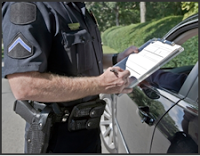Tag Archive: driver’s license

Five Tips Before Teens Get Their Drivers License
October 6, 2010
A common rite of passage for teenagers is getting their driver’s license. Before teens get their license, they have to prepare themselves thoroughly. Here are a five tips for teens as they work towards their driver’s license:
1. Study the handbook. It’s surprising what kind of motivation teens have when it comes to studying for their driving test. The written part of the driving exam is pretty much like other tests for classes in school: you have to study to pass. You don’t study, you fail. You never know which part of the driving manual will appear in the exam, so it important to be well versed on the material to increase the chances of passing. If you decide you want to practice more, you can sign up for a drivers license practice test online course. You’ll get to see over 1,500 questions and answers similar to those found on the written driver’s test, along with detailed explanations.
2. Find out about the local GDL laws. Different states have different Graduated Drivers License (GDL) laws, and it’s worth noting that many states have varied age and time of day restrictions, passenger and mobile device limitations, and educational requirements before teens can get a full license. Also, the penalties and ordinances change depending on where you drive. Be familiar with the laws and ordinances for teen drivers for where you live and the places you plan to drive with your teen.
3. Make a covenant with parents. Straight talk and clear guidelines between teen drivers and their parents or guardians will assist teen driver safety. Setting boundaries that teens and parents can agree on will give teens an idea of the responsibility they will be undertaking. A Teen Driving Contract will help to guide and establish the expectations and consequences of driving privileges and behavior.
4. Practice makes perfect. A teen should always insist on getting more practice with their driving. On the other hand, parents and guardians over 21 years-old, should be more than willing to accompany them and teach them how to drive properly, especially in different types of weather and road conditions and environments, including nighttime, rain, and expressway driving. Several states require 50 hours of behind the wheel driving practice as a minimum, before full licensure. To help record this time, use a driving log. A printable version can be found at
5. No, focus makes perfect. Learning to maneuver the vehicle with ease and control is a milestone. But if a teen cannot stay focused, they are not ready to drive alone. This tip works in conjunction with the tips above. Giving each task the required amount of attention will make teen drivers reach their goal of becoming better drivers. Removing distractions to driving and keeping them focused on their interaction with the changing driving environment will not only make getting their license easier, it will help them be a safer driver.
Use these tips to help to set your teen up for success as they embark on preparing for their license. It is an exciting time of new endeavors and more independence. Have fun and be safe!

Tips for Taking a DMV Practice Test
September 16, 2010
When a driver decides to take a DMV Test for the first time, they’re all supposed to be confident. If they’ve studied the handbook and familiarized themselves with the rules of the road, listened to the lectures, and took up a DMV Practice test, they are bound to pass in no time.
When taking a DMV Test for the first time, confidence is the key. If they’ve studied the handbook, and familiarized themselves with the rules of the road, listened to the lectures, and a have taken a DMV Practice test, they are bound to pass with ease.
A big problem for new drivers is where to start. Knowing which parts of the driving manual are most important and how the information will relate to actual, real life, driving can be confusing. Taking a DMV practice exam can help.
A DMV Practice test is a mock exam that simulates the experience of taking the actual written portion of the exam, without the risk of failing and having to wait the required waiting period before getting to take it again.
To pass the DMV Practice Test, here are a few tips that will help future drivers:
- Treat the DMV Practice Test as if it’s the real thing. If a driver studies as hard for the practice exam as if it’s the real thing, he or she will be better prepared. In the real exam, no two test-takers will get the same set of questions so, for that reason, the practice exam creates a random test from a large data base of questions taken directly from the driving manual.
- Avoid Distractions. Focus on what you learned in driver’s ed and just answer the test. Not only will this help you study, but it will also help you learn the importance of being focused. Distracted driving is fast-becoming one of the most common hazards on the road, and by setting the habit of avoiding it, a driver ensures himself a future of safe driving.
- Be confident in your abilities and what you’ve learned. This is one of the reasons why students fail their DMV test and a practice test is a way for a driver to get rid of that nervousness by getting more informed with what to expect from the real thing.
Enrolling in a DMV Practice Test is always a good idea for new drivers. It builds confidence and helps first-time drivers become guided in where they should start when studying for their driving test.

Taking Your Restricted Drivers License Across State Lines
May 11, 2010
Restricted license sure is a step-up from a learner’s permit, but it’s still not the unrestricted, seemingly-special license and for good reason. The graduated driving license (GDL) laws are designed to introduce teen drivers gradually into the driving environment by limiting distractions such as other teen passengers and cell phone use. The laws also restrict driving at night until the teen has gained a lot of driving experience. The GDL laws in your state may allow you to drive alone under certain circumstances but that law may not apply in other states.
No one under 18 – Most states only consider drivers eligible for application of the unrestricted license if they are over the age of 18. However other states, such as New York, prohibit unrestricted driving by anyone under the age of 21, even if they hold an unrestricted license in another state.
Each state’s DMV honors restriction put about by your state – If you receive a ticket in another state, your home state will be notified and your driving record will show the traffic offense just as if had been committed in your home state. Whatever points your home state applies to a particular offense will be added to your driving record. If you are caught violating the restricted driving rules of your state, you could be charged with driving without a valid license.
Double Trouble – If you commit a traffic offense in another state, you will have to pay the fines for that state and you will find that you will have points assessed in your own state. If the offense committed in another state puts you over the point limit in your home state, you could find that your license has been suspended. If your license is suspended in one state, all other states will honor that suspension.
Holding a driver’s license, even a restricted one means being responsible and following restrictions put about by the driver’s state. If you plan to travel to another state, you can go to that state’s DMV web site and find out if your privilege to drive in that state will be more or less restricted. It is better to do the homework first rather than finding out too late by receiving a traffic ticket.
For more information about driving laws visit your state see our DMV Department of Motor Vehicles Directory.

Reinstatement Requirements for a Suspended Driver’s License
December 25, 2009
If you find yourself in the difficult position of having your driver’s license suspended for too many points or traffic violations, it’s important to follow the proper steps to regain it. Most drivers who lose their licenses for any length of time hope never to repeat the experience, but drivers who have recently had their license suspended are often at high risk of having it suspended again.
First, do not drive on your suspended license, and if you have a hardship license, do not violate the terms specified on the license. If you get caught driving on a suspended license because you commit a violation or are in a crash, your situation will only deteriorate.
Use a small notebook to keep a checklist of the tasks you must complete to get your license back. These tasks may include updating your address with the Department of Motor Vehicles, going to court one or more times, paying fines and/or fees, and/or taking one or more driver education classes.
Take your notebook to every court hearing or DMV appointment so you can record all the information you get in one place. Keep the notebook handy when you make phone calls about your license too. If you call the DMV and get transferred, ask the person who assists you for their name and extension number in case you need to call back later. Make notes of what you’re told and review them before you hang up.
You may feel frustrated if you have to attend traffic school, but this is a good time to review your driving habits and decide how to change them to avoid a future suspension. Try to keep an open mind during the course. You may pick up some tips that will help keep you and your family safe.
Drivers who accumulate several traffic violations over a short period of time are often under considerable stress. Speeding, weaving in and out of traffic, running stop signs and traffic lights, and cutting off other drivers are ways that some people release aggression and relieve stress. It’s important to find positive, healthy, legal ways to reduce stress such as exercise, talking problems out with friends or a counselor, and taking time for yourself every day, so you won’t take your problems out on the road.
After your license is reinstated, you’ll want to be on your best driving behavior. Try to turn a negative into a positive by learning from the experience of having your license suspended. This will give you the best chance of improving your driving record and avoiding future problems.

Graduated Driver Licensing Laws: A Comparison
April 8, 2009
A national model for Graduated Driver Licensing Programs has existed since the mid 1990s. The model provides guidelines for states to create their own GDL programs. Currently, no state follows all the guidelines, and GDL programs vary widely from state to state.
The recommended guidelines are:
Stage 1: Learner’s Permit
- State sets minimum age for a learner’s permit at no younger than age 16;
- Pass vision and knowledge tests, including rules of the road, signs, and signals;
- Completion of basic driver training;
- Licensed adult (who is at least 21 years old) required in the vehicle at all times;
- All occupants must wear seat belts;
- Teenage-passenger restrictions;
- Zero alcohol while driving;
- Permit is visually distinctive from other driver licenses;
- Must remain crash and conviction free for at least six months to advance to next level;
- Parental certification of 30 to 50 practice hours; and
- No use of portable electronic communication and entertainment devices.
Stage 2: Intermediate (Provisional) License
- Completion of Stage 1;
- State sets minimum age of 16.5;
- Pass a behind the wheel road test;
- Completion of advanced driver education training (safe driving decision-making, risk education, etc.)-All occupants must wear seat belts;
- Licensed adult required in the vehicle from 10 p.m. until 5 a.m. (e.g., nighttime driving restriction);
- Zero alcohol while driving;
- Driver improvement actions are initiated at lower point level than for regular drivers;
- Provisional license is visually distinctive from a regular license;
- Teenage-passenger restrictions: not more than one teenage passenger for the first 12 months of intermediate license. Afterward, limit the number of teenage passengers to two until age 18;
- Must remain crash and conviction free for at least 12 consecutive months to advance to the next stage;
- Supervised practice; and
- No use of portable electronic communication and entertainment devices.
Stage 3: Full Licensure
- Completion of Stage 2;
- State sets minimum age of 18 for lifting passenger and nighttime restrictions; and
- Zero alcohol while driving.
Source: National Highway Traffic Safety Administration
To understand the range of differences among states, let’s examine the GDL laws of four states: California, Florida, Mississippi, and North Dakota.
The NHTSA recommends that the state sets the minimum age for a learner’s permit at no younger than age 16. In California, the minimum age for a learner’s permit is 15 years, six months; in Florida and Mississippi, the minimum age is 15. The minimum age in North Dakota is 14.
Before getting a license or restricted license in Florida, new drivers must have a mandatory holding period of the learner’s license of twelve months; the other three states require six months. In Mississippi, license applicants age 17 and older are exempt from the holding period. The NHTSA recommends an intermediate (provisional) stage with a minimum age of 16.5. The applicant must remain crash and conviction free for at least six months to advance from the learner’s permit to the intermediate level. They further recommend that in the intermediate license stage, the applicant must remain crash and conviction free for at least 12 consecutive months to advance to full licensure.
The NHTSA recommends parental certification of 30 to 50 practice hours of driving in the learner’s permit stage. While California and Florida each require 50 hours, 10 of which must be at night, neither Mississippi nor North Dakota require certification of any driving practice hours.
Applicants in Mississippi must be age 15 years, six months before getting a license or restricted license. Florida, North Dakota, and California require a minimum age of 16; however, in California, license applicants who do not take driver education must wait until age 18 for a license. The NHTSA recommendation is for full licensure only after completion of the intermediate licensing stage, with a minimum age of 18 for lifting passenger and nighttime restrictions. However, North Dakota does not have any passenger or nighttime restrictions, and Florida and Mississippi have only nighttime restrictions. California’s passenger restriction is that for the first 12 months, the restricted driver may have no passengers younger than 20, with limited exceptions for immediate family.
One way to improve the traffic crash figures for teenage drivers is to advocate for stronger Graduated Driver Licensing requirements in your state. In the meantime, you can reduce the risks for your own children by ensuring that they obey existing GDL laws and by implementing some of the NHTSA’s guidelines into your own house rules if your state has relatively weak GDL laws.
